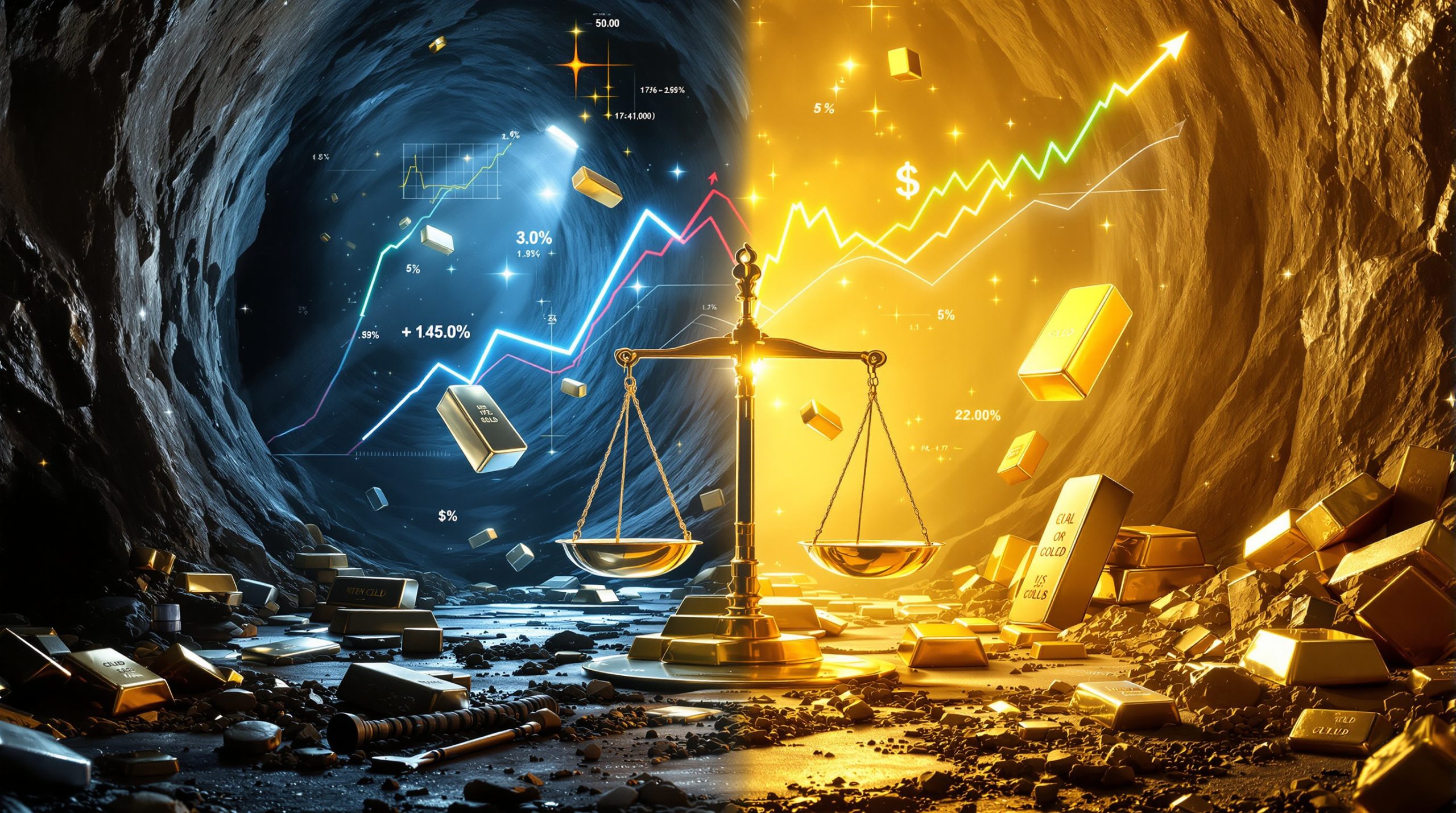What is the Critical Minerals Investigation About?
The critical minerals investigation launched by President Trump is a significant escalation in the ongoing trade war with China. Under Section 232 of the Trade Expansion Act of 1962, this probe aims to determine how imports of processed critical minerals and their derivative products affect US national security. The investigation could potentially lead to additional tariffs on industrial resources, similar to the previous 25% tariffs imposed on steel and aluminum.
This strategic move leverages a powerful legal framework that gives the administration authority to evaluate threats to national security from foreign imports. By targeting critical minerals, Trump has selected a sector where Chinese dominance poses genuine concerns for American economic resilience and defense capabilities.
Key Elements of the Investigation
The investigation specifically targets 15 critical minerals essential for advanced technology manufacturing and defense systems. These include rare earth elements like neodymium, praseodymium, and dysprosium, which are irreplaceable components in everything from missile guidance systems to wind turbines.
This probe follows recent investigations into semiconductor chips and pharmaceutical imports, forming part of a broader strategy to reduce dependency on Chinese supply chains. Experts note that China has spent decades developing its dominant position in critical mineral shortages, investing in mining operations worldwide while the US focused on other economic priorities.
The legal mechanism being employed—Section 232—is the same framework used in 2018 to justify tariffs on steel and aluminum imports, which significantly disrupted global metal markets and supply chains. Industry analysts predict similar market disruptions if tariffs are applied to critical minerals.
Why Are Critical Minerals So Important?
Critical minerals, including rare earth elements, are fundamental components in modern technology and defense systems. Their strategic importance cannot be overstated in today's technology-driven economy.
According to mining industry experts, these minerals possess unique electromagnetic and catalytic properties that cannot be replicated with substitute materials. For instance, neodymium magnets are 10-15 times stronger than conventional ferrite magnets, making them essential for miniaturized electronics and powerful electric motors.
Strategic Applications of Critical Minerals
In the defense sector, critical minerals enable technologies that maintain American military superiority. A single F-35 fighter jet contains approximately 920 pounds of rare earth elements. These minerals are used in precision-guided weapons, night vision goggles, and communications systems that give US forces their technological edge.
In the civilian sector, gallium nitride semiconductors have revolutionized 5G telecommunications, while lithium, cobalt, and nickel form the backbone of the electric vehicle revolution. A typical electric vehicle battery requires 8-10 kg of lithium, making access to these minerals essential for the green energy transition.
Renewable energy infrastructure depends heavily on critical minerals as well. A single 3-megawatt wind turbine contains approximately 2 tons of rare earth elements in its permanent magnets, highlighting the connection between mineral security and climate goals.
Current US Dependency Statistics
The dependence of the US on foreign sources for critical minerals represents a significant vulnerability. According to geological surveys, the United States relies on imports for 15 critical minerals, with an alarming 70% of these imports originating from China.
The domestic production landscape is sparse, with only one operational rare earth mine at Mountain Pass, California. More concerning is the complete absence of domestic smelting and separation facilities for rare earth elements, meaning that even domestically mined materials must be sent overseas—primarily to China—for processing.
China has methodically developed its dominant position over decades. Through strategic investments and state subsidies, China now controls the production of more than half of the 50 critical minerals identified by the US government as essential. This dominance extends beyond China's borders, with Chinese companies controlling mining operations in Africa, South America, and Southeast Asia.
How Does This Fit Into the US-China Trade War?
The investigation into critical minerals represents a significant expansion of the trade conflict between the world's two largest economies, with both sides taking increasingly aggressive positions.
Geopolitical analysts observe that this investigation targets not just economic interests but China's core strategy of technological advancement and global influence. By challenging China's dominance in critical minerals, the US is attacking a pillar of China's "Made in China 2025" industrial policy.
Recent Escalations in the Trade War
The critical minerals probe follows China's announcement of export restrictions on germanium, gallium, antimony, and rare earth magnets—materials critical for semiconductor manufacturing and defense applications. Industry sources confirm these restrictions have already disrupted supply chains for European and American high-tech manufacturers.
These China's export restrictions were implemented as a direct response to Trump's commodity policies and earlier tariff increases on Chinese goods, demonstrating the tit-for-tat nature of the escalating trade war. The timing suggests coordinated strategy rather than coincidence.
In a surprising revelation that underscores the minerals' geopolitical importance, Trump previously demanded $500 billion (€442 billion) worth of Ukraine's rare earth and critical minerals as part of peace talks, according to a detailed Reuters report. Ukraine possesses significant reserves of titanium, lithium, and uranium, making it potentially valuable in diversifying supply chains away from China.
China's Dominant Position in Critical Minerals
China's control over the critical minerals supply chain is comprehensive. According to industry data, China processes an astonishing 90% of global rare earth elements, despite possessing only about one-third of global reserves.
This dominance stems from decades of strategic planning. In the 1980s, while Western countries outsourced mining due to environmental concerns and cost pressures, China invested heavily in extraction and processing capabilities. Chinese companies now possess advanced technical expertise in complex separation processes that few Western companies can match.
Mining executives note that China has leveraged this dominance effectively in previous diplomatic disputes. In 2010, during tensions with Japan, China restricted rare earth exports, causing prices to surge by 4,000% for some elements and forcing policy changes from the Japanese government.
What Are the Market Implications?
The announcement has already triggered significant market responses, particularly affecting mining companies and commodity prices.
Financial analysts point out that markets react to geopolitical tensions in the critical minerals sector with heightened sensitivity due to the concentrated nature of supply chains and limited substitutability of these materials.
Immediate Market Reactions
Australia's major mining stocks, which include significant producers of rare earths and other critical minerals, experienced notable declines during Wednesday's Asian session. BHP, one of the world's largest mining companies, saw its shares fall 1.2%, while Rio Tinto, another mining giant with significant critical minerals operations, experienced a 2.3% decline.
Phibara Minerals, which specializes in rare earth and specialty metals production, was hit even harder with a 2.9% drop in share price. Investment analysts attribute these declines to market fears about potential disruption to the Chinese market, which remains the largest customer for many of these mining operations.
Commodity futures markets also registered immediate impacts. Iron ore futures on the Singapore Exchange declined 0.35%, while copper futures, often seen as a barometer for industrial activity, fell a more substantial 0.91%. Market traders suggest these declines reflect concerns that tariffs could dampen overall industrial demand by raising manufacturing costs.
Broader Economic Impact
Economic forecasters predict European markets will open lower as the investigation adds another layer of uncertainty to already stressed global trade relationships. Manufacturing sectors in Germany and France, which rely heavily on specialized industrial materials, face potential supply disruptions and cost increases.
The technology sector faces particularly acute pressure from the combination of new export restrictions to China and potential tariffs on imported critical minerals. Semiconductor manufacturers, already grappling with shortages and high prices, may face further challenges if the investigation leads to tariffs or countermeasures from China.
Mining industry consultants note that the investigation could paradoxically benefit some Western mining companies in the long term by creating incentives for domestic production, but the transition period would likely involve significant market volatility and increased costs for manufacturers.
How Could This Reshape Global Supply Chains?
The investigation signals a potential restructuring of global supply chains for critical minerals, with significant implications for international trade relationships.
Supply chain experts point out that diversification efforts were already underway before this investigation, spurred by COVID-19 disruptions and earlier trade tensions. However, this probe could accelerate these changes dramatically, potentially contributing to a new commodity super-cycle.
US Strategic Objectives
The primary objective behind the investigation appears to be reducing America's dependency on Chinese critical mineral supplies. Defense analysts suggest that complete independence is unlikely in the short term, but even reducing dependency by 30-40% would significantly enhance national security.
US officials are actively pursuing diversification strategies, including developing new supplier relationships with Australia, Canada, and other allies. Recent agreements with Australia focus on joint development of critical mineral resources, while talks with Canada aim to integrate North American supply chains more effectively.
Government funding through the Defense Production Act has been allocated to strengthen domestic production capabilities. Projects receiving support include processing facilities in Texas and California designed to restore US capacity in rare earth separation and refining—capabilities that have been absent from American industry for decades.
Vulnerabilities in Current Supply Chains
According to the official investigation document, "Processed critical minerals and their derivative products face significant global supply chain vulnerabilities." These vulnerabilities extend beyond simple import dependence to include complex issues of processing know-how, specialized equipment, and technical expertise.
Mining engineers explain that developing alternative supply chains is technically challenging because critical mineral processing involves complex chemical processes and generates significant environmental challenges. Many Western companies abandoned these capabilities decades ago, and rebuilding them requires not just capital but specialized knowledge that has been lost.
Market concentration creates additional vulnerabilities. For many critical minerals, three or fewer countries control the majority of global production. This concentration creates risks not just from intentional supply disruptions but also from natural disasters, political instability, or infrastructure failures in key producing regions.
What Are the Potential Outcomes of This Investigation?
The critical minerals investigation could lead to several potential outcomes, each with different implications for international trade and domestic industry.
Trade policy experts suggest that the administration has multiple options available depending on the investigation's findings. The Section 232 mechanism provides significant flexibility in responding to identified national security threats.
Possible Policy Responses
The most direct outcome could be the implementation of new tariffs on critical mineral imports, similar to the 25% tariffs previously imposed on steel and aluminum. Industry analysts suggest that tariff rates would likely be calibrated to encourage domestic production without excessively burdening US manufacturers who currently have few alternatives to imported materials.
Enhanced government support for domestic mining and processing represents another likely outcome. Beyond Defense Production Act funding, this could include streamlined permitting processes, tax incentives for domestic production, and research grants for developing more environmentally sustainable extraction methods.
Formation of new international partnerships to secure supply chains outside Chinese control is already underway but could accelerate following the investigation. The "Five Eyes" intelligence alliance countries (US, UK, Canada, Australia, and New Zealand) have discussed coordinating critical minerals strategies to reduce collective vulnerability to supply disruptions.
Investment in alternative technologies and recycling capabilities could also receive increased support. Materials scientists note that techniques for recovering rare earths from electronic waste have improved significantly, potentially allowing for the recapture of up to 90% of some critical elements from discarded technology.
Long-term Strategic Implications
Economists and geopolitical analysts predict an acceleration of economic decoupling between the US and China as a result of the investigation and likely policy responses. While complete decoupling is impractical, strategic sectors including defense, telecommunications, and renewable energy may develop parallel supply chains.
Global trade patterns for industrial resources will likely undergo significant reshaping over the next decade. Countries with undeveloped critical mineral reserves, including Brazil, Vietnam, and several African nations, could see increased investment and development activity as diversification efforts accelerate.
Consumers may face increased prices for technology products if tariffs are imposed without adequate alternative supplies being developed. Industry analysts estimate that smartphone prices could increase by 5-15% if rare earth element costs rise significantly, while electric vehicle costs could increase by $1,000-3,000 per vehicle.
The development of new mining and processing capabilities in allied countries will require significant capital investment. Mining industry experts estimate that establishing a comprehensive rare earth processing capability outside China would require $5-10 billion in investment and 5-7 years of development time.
FAQ: Critical Minerals and Trade War
What exactly are "critical minerals"?
Critical minerals are raw materials deemed essential for economic and national security. They include rare earth elements, lithium, cobalt, and other minerals vital for advanced technology, defense systems, and renewable energy infrastructure. The US government has identified approximately 50 minerals as "critical" based on their importance to the economy and the risk of supply disruption.
These materials often have unique properties that make them difficult or impossible to substitute. For example, neodymium creates the strongest permanent magnets available, essential for electric vehicle motors, while scandium-aluminum alloys produce exceptionally strong and light materials for aerospace applications.
How dependent is the US on China for critical minerals?
The US is heavily dependent on China for critical minerals, with 70% of imports originating from China. This dependence is particularly acute for rare earth elements, where China controls approximately 90% of global processing capacity.
The US has only one operational rare earth mine at Mountain Pass, California, and no domestic smelting capacity. Even materials extracted from this mine must be sent overseas for processing, creating a vulnerability even for domestically sourced minerals.
Chinese dominance extends beyond processing to mining as well. China controls more than half of the world's supply of critical minerals through domestic production and investments in foreign mining operations, particularly in Africa and Southeast Asia.
How might this investigation affect consumer prices?
If the investigation leads to new tariffs on critical mineral imports, consumer prices for electronics, vehicles, and other technology products could increase. These minerals, while often used in small quantities, are essential components that cannot be easily substituted.
Industry analysts estimate that smartphone prices could increase by 5-15% if tariffs significantly raise rare earth costs. Electric vehicles, which use larger quantities of critical minerals in their batteries and motors, could see price increases of $1,000-3,000 per vehicle.
Renewable energy infrastructure like wind turbines and solar panels would also face cost pressures. A typical 3-megawatt wind turbine contains approximately 2 tons of rare earth elements, so tariffs could increase installation costs by tens of thousands of dollars per turbine.
Are there alternative sources for critical minerals outside China?
Yes, there are alternative sources, though currently underdeveloped. Australia, Canada, Brazil, and several African nations have significant deposits of various critical minerals. Australia possesses approximately 17% of global rare earth reserves, while Brazil has substantial niobium and tantalum resources.
The challenge lies in developing mining operations and processing facilities, which requires substantial investment and time. Environmental regulations in Western countries are typically more stringent than in China, increasing development costs and timeframes.
Recycling technologies for recovering critical minerals from electronic waste also represent a potential alternative source. Advanced recycling facilities can now recover up to 90% of some rare earth elements from hard drive magnets and other components, though scaling these operations to industrial levels remains challenging.
How does this investigation connect to national security?
Critical minerals are essential for defense systems, including aircraft, missiles, communication equipment, and other military technologies. A single F-35 fighter jet contains nearly 1,000 pounds of rare earth elements in various components.
The Pentagon has identified reliable access to critical minerals as essential for maintaining military readiness. Disruptions to supply could potentially delay production of critical defense systems or force expensive redesigns to avoid dependent components.
Beyond direct military applications, critical minerals support dual-use technologies like advanced telecommunications, artificial intelligence systems, and quantum computing—all areas where maintaining technological leadership has significant national security implications.
Key Takeaways on the Critical Minerals Investigation
The dependence of the United States on imports and the vulnerability of our supply chains raises the potential for risks to national security, defense readiness, price stability, and economic prosperity and resilience. This investigation represents a significant escalation in the US-China trade war, focusing on resources vital to modern technology and defense systems.
With China controlling the majority of global critical mineral production and processing, the US faces substantial challenges in securing these essential resources. Developing alternative supply chains will require billions in investment and years of development, but is increasingly viewed as essential for economic security.
The potential outcomes—ranging from new tariffs to reshaping global supply chains—will have far-reaching implications for international trade, technology development, and economic relationships. Companies throughout technology supply chains are already adjusting strategies in anticipation of policy changes resulting from the investigation.
The investigation signals a growing recognition of the strategic importance of critical minerals in the 21st century economy and highlights the vulnerabilities created by concentrated supply chains. As both the US and China take increasingly aggressive positions, businesses and investors worldwide must prepare for continued volatility and potential restructuring of global market insights and resource markets.
Ready to Identify the Next Major Mineral Discovery?
Stay ahead of the market with Discovery Alert's real-time notifications of significant ASX mineral discoveries, powered by their proprietary Discovery IQ model. Explore why historic discoveries have generated substantial returns by visiting Discovery Alert's dedicated discoveries page and begin your 30-day free trial today.




